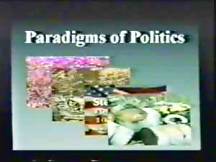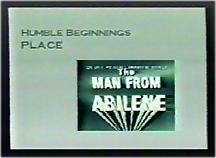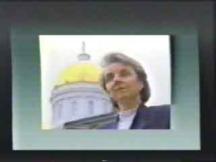|
Video Rhetorics: Televised Advertising in American Politics. John Nelson and Bob Boynton. University of Illinois Press, l997. 269-page book and 63-minute VHS video.
Just as meaning does not reside in texts but in people so too arguments exist at the intersection between a complicitous audience and a text which can consist of a single visual image. Indeed, the most powerful persuasion probably occurs when a member of an audience is not led claim by claim to a conclusion but rather gets there on her own�in Aristotle's term enthymematically�with the slightest of incentives from a communicator. Nelson and Boynton miss this point when they describe an ad for Madeleine Kunin which juxtaposed pictures of New York City, underscored by harsh sounds, with pastoral pictures and soothing sounds of Vermont. "This is Vermont,"
Westerners from Plato onward have understood that what Nelson and Boynton call aesthetics plays a role in persuasion; they just did not consider such things argument. Nor do Nelson and Boynton make a compelling case for that label. Instead, they focus on arguing that the non-verbal elements in messages matter. Westerners from Plato onward knew this. The authors know this—at least they know it in one of the chapters of the book. After all, on page 99 they write that "Even Aristotle knew the importance of the voices of rhetoric. He thought delivery to be "a matter of how the voice should be used in expressing each emotion." Similarly, on pages 94-95 they synthesize western theorists who did "not limit delivery to use of voice; they include the evocation of images along with the movement of gestures. In fact they mobilize metaphors from all the senses. . . ." There are other points in the text that scholars of rhetoric might well contest. "Of the five overarching concerns of classical rhetoric, only one was slighted throughout antiquity" (p. 87). Aha, you might be thinking. They are now going to treat the so-called lost canon, memoria? Wrong. This is a chapter about delivery. While indicating why "[I]nattention to delivery is not hard to explain, at least for the West" (p. 87) the authors might want to explain that it was the elocutionary movement's obsession with delivery to the exclusion of the other canons of rhetoric that led a number of major institutions of higher learning to abandon the study of rhetoric altogether. The authors owe Aristotle an apology. Their preface says they "set about healing the lasting wounds that Aristotle inflicted on rhetorical analysis. . . ." To do so, they "integrate dynamics of ethos, logos, and pathos with considerations of mythos and poetics" (p.xiv). That is, of course, what Aristotle did and is the reason that the Rhetoric and Poetics are customarily published in the same volume and taught together. Finally Video Rhetorics caused me to meditate on my own identity. Before pleading innocent or guilty to being a logocentrist (p. 98), I ask the jury to consider that Nelson and Boynton quote me analyzing visual meaning (p. 39), music and images (p. 208), and implicit as well as explicit meaning (p. 189). Logocentrist or not, I do acknowledge their worries about my role in institutionalizing adwatching, a process they dismiss as the "institutionalized ad police" (p. 134; see also p. 66) but believe that their real concern is that adwatchers attend to visual, tonal, musical, and audio as well as verbal information in ads—something good adwatchers do. The adwatchers I applaud also carefully weigh the adequacy of their own evidence before drawing conclusions. Before claiming, for example, that the Bush ad about Clinton's tax plans "was misleading, in ways that none of the critics we heard acknowledged" (p. 31) and declaring that "The truth squads of reporters and scholars should learn how ads work before judging them," (p. 31) a good adwatcher would conduct a comprehensive review of the adwatching done on that ad on TV (including PBS), radio (including NPR), and in print in l992. Kathleen Hall JamiesonAnnenberg School for Communication of the University of Pennsylvania
Comments | JMMH Contents | |||||||||||



